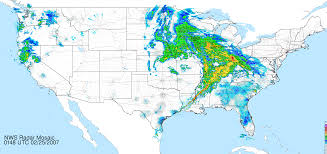We watch television or listen to the radio and hear weather reports which alert us to the type of winter weather we can expect in our area. But do you know the difference between a Winter Storm Watch, Advisory, or Warning? Well, here are the definitions that will help you know what each term means.
Know the Terms
Know the terms used to describe changing winter weather conditions and what actions to take. These terms can be used to determine the timeline and severity of an approaching storm. (Advisory / Watch / Warning). The NWS also issues advisories and warnings for other winter weather, including blizzards, freezes, wind chill, lake effect snow, and dense fog. Be alert to weather reports and tune in for specific guidance when these conditions develop.
Freezing Rain – Rain that freezes when it hits the ground, creating a coating of ice on roads, walkways, trees and power lines.
Sleet – Rain that turns to ice pellets before reaching the ground. Sleet also causes moisture on roads to freeze and become slippery.
Wind Chill– Windchill is the temperature it “feels like” when you are outside. The NWS provides a Windchill Chart to show the difference between air temperature and the perceived temperature and the amount of time until frostbite occurs. For more information, visit: www.nws.noaa.gov/om/windchill.
Winter Weather Advisory – Winter weather conditions are expected to cause significant inconveniences and may be hazardous. When caution is used, these situations should not be life threatening. The NWS issues a winter weather advisory when conditions are expected to cause significant inconveniences that may be hazardous. If caution is used, these situations should not be life-threatening.
Winter Storm Watch – A winter storm is possible in your area. Tune in to NOAA Weather Radio, commercial radio, or television for more information. The NWS issues a winter storm watch when severe winter conditions, such as heavy snow and/or ice, may affect your area but the location and timing are still uncertain. A winter storm watch is issued 12 to 36 hours in advance of a potential severe storm. Tune in to NOAA Weather Radio, local radio, TV, or other news sources for more information. Monitor alerts, check your emergency supplies, and gather any items you may need if you lose power.
Winter Storm Warning – A winter storm is occurring or will soon occur in your area.
Blizzard Warning – Sustained winds or frequent gusts to 35 miles per hour or greater and considerable amounts of falling or blowing snow (reducing visibility to less than a quarter mile) are expected to prevail for a period of three hours or longer.
Frost/Freeze Warning – Below freezing temperatures are expected.
Source: FEMA

